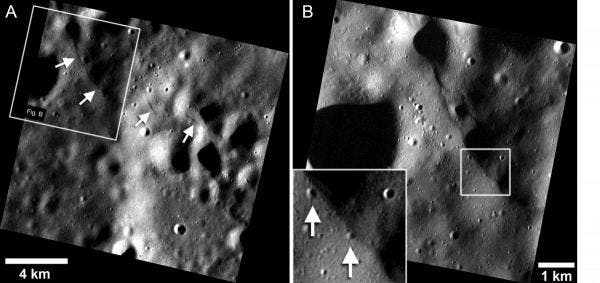Mercury becomes the second confirmed tectonically active planet in the Solar System, as new evidence from the MESSENGER spacecraft finds developing fault lines on the scorching planet.
For a long time, Earth was believed to be the only planet in our Solar System which could boast tectonic activity. This geologic liveliness has been linked to our planet’s unique ability to sustain life — but now, NASA found evidence of similar activity on Mercury. The MESSENGER spacecraft swooped in close to the tiny planet on its last 18 months orbiting it and found evidence of shifting pieces of crust and developing fault lines.
The photographs suggest that Mercury is still contracting, joining Earth as a tectonically active planet in the Solar System.

“The young age of the small scarps means that Mercury joins Earth as a tectonically active planet, with new faults likely forming today as Mercury’s interior continues to cool and the planet contracts,” said lead researcher Tom Watters, Smithsonian senior scientist at the National Air and Space Museum in Washington, DC.
Mercury isn’t the first body in the system or the only other planet apart from Earth to show these signs — we’re also suspecting similar activity on Europa, Jupiter’s watery moon, and UCLA professor of Earth and space sciences An Yin is building a strong case for tectonic activity on Mars. It hasn’t yet been confirmed, but scientists suspect that Jupiter’s tidal lock on the planet is what keeps its subsurface warm enough to stay liquid, in essence powering its tectonics. Yin’s paper is still awaiting peer-review.
However, with an 88-day orbit around the Sun, no atmosphere, and temperatures skyrocketing from -173 degrees Celsius (–280 degrees Fahrenheit) at night to a scorching 427 degrees Celsius (800 degrees Fahrenheit) during the day, Mercury sadly remains decidedly uninhabitable.
Researchers hope that by better understanding this activity on this tiny world, we’ll more easily spot similar processes on worlds outside of the Solar System. They’ll keep studying the planet’s magnetic field and surface activity to gain insight into the inner workings of the planet.
“This is why we explore,” said Jim Green, NASA’s planetary science director. “For years, scientists believed that Mercury’s tectonic activity was in the distant past. It’s exciting to consider that this small planet – not much larger than Earth’s moon – is active even today.”
The findings, titled “Recent tectonic activity on Mercury revealed by small thrust fault scarps” have been published in Nature Geoscience.
Was this helpful?



